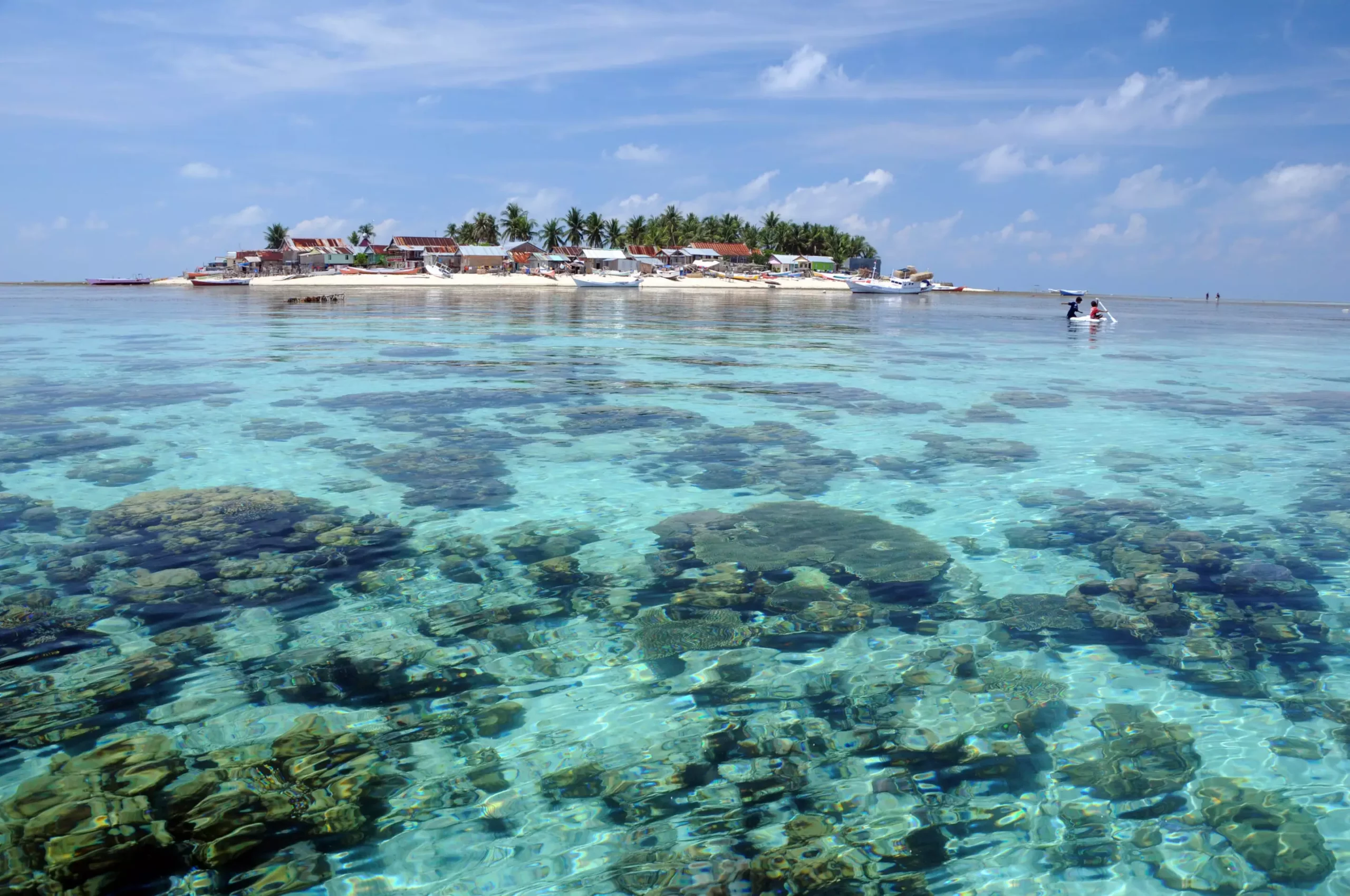Coral islands are at risk of sinking due to rising sea levels. Recent research conducted by the Leibniz Centre for Tropical Marine Research (ZMT) has found that environmental factors other than sea level could also play a significant role in the fate of threatened islands. Tropical coral islands form when sediments, consisting of calcareous skeletons and shells of corals, clams, snails, or calcareous algae, are deposited on the roof and in the lagoon of a reef, forming a sandbar. These islands usually rise only a few meters above sea level.
While sea levels could rise by one to two meters by the end of this century due to ocean warming and melting ice caps, the ZMT researchers found that other environmental factors could also impact coral island development. To better understand changes in the shape of reef islands over a more extended period, ZMT researchers, along with their Indonesian colleagues, studied the past 10,000 years of geological evolution of a coral island in the Indonesian Spermonde Archipelago: Barrang Lompo.
The team took several ten-meter sediment cores from the island floor and examined the age, grain size, and composition of the sediments from the shells and skeletal fragments of various calcifying organisms. By doing so, they could infer which parts of the reef the organisms came from and how they were transported. The results were compared with data on sea level trends and climatic conditions over the past 10,000 years.
The researchers discovered that the island formed in a former lagoon surrounded by coral reefs. Waves washed calcareous sediments from the reefs into the lagoon, filling it up until Barrang Lompo Island was formed 3,000 years ago. However, the filling was delayed when the sea level rose by 50 cm above today’s level about 5,800 years ago, as less sediment entered the lagoon.
Contrary to the researchers’ expectations, the lagoon filled with sediment only unusually slowly thereafter, even though the sea level dropped back to its present level about 500 years later. They attribute this discovery to climatic conditions. The Spermonde Archipelago is a monsoon area, but the strength of the monsoon winds has not always been constant over the last 10,000 years. The waves transported sediment into the lagoon only when the monsoon winds became stronger.
“Sea level is often used as the only factor to explain the development of coral islands. In the case of Barrang Lompo, however, sea level fluctuations are not sufficient,” says Yannis Kappelmann, a geoscientist at ZMT and lead author of the study. “If we want to make adequate statements regarding future island developments, we have to include climatic parameters such as wind and other environmental conditions.” Therefore, if monsoon conditions change due to climate change, coral islands’ development is likely to change as well.
The Spermonde Archipelago is home to 50,000 people, with 4,600 on Barrang Lompo alone. Studies like this one can help improve future projections for coral islands in the face of global warming and rising sea levels.


Leave a Reply